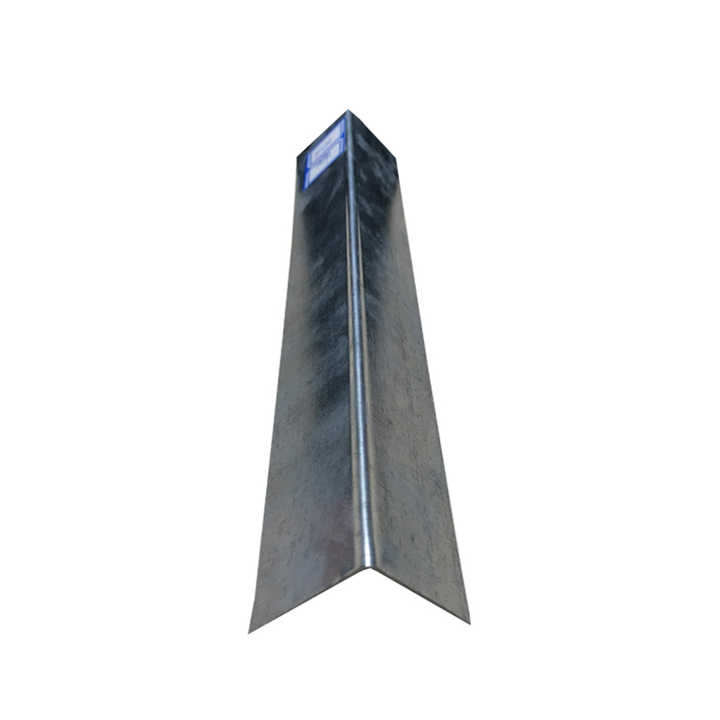Ceiling Grid
Drywall partition
Ceiling channel
Corner Wall angle
Accessories
Steel profiles
Support customization

Galvanized iron wall angle for suspended ceiling
Galvanized Iron Wall Angle for Suspended Ceiling is a structural component used in ceiling systems to provide a stable framework for suspended ceilings. This L-shaped angle, often made from galvanized iron, is designed to create a perimeter support along walls for the ceiling grid system. The galvanized coating protects the angle from rust and corrosion, which makes it suitable for both indoor and outdoor installations, including humid environments like bathrooms and kitchens.
Key Features of Galvanized Iron Wall Angle for Suspended Ceiling
Material:
Made from galvanized iron, which offers strength and corrosion resistance.
The zinc coating ensures the wall angle remains durable in moisture-prone areas.
Shape and Design:
Typically L-shaped (right-angle design) with one side secured to the wall and the other supporting the ceiling grid.
Provides a clean, defined edge between the ceiling and wall, ensuring a professional finish.
Size and Dimensions:
Standard sizes include 25mm x 25mm or 30mm x 30mm, with lengths generally ranging from 3 to 3.6 meters.
Available in custom dimensions to suit various ceiling system requirements.
Pre-Punched Holes:
Some angles come with pre-punched holes for easier attachment to walls with screws or nails.
These holes ensure quick installation and alignment with the ceiling grid.
Galvanized Finish:
The galvanized finish offers a smooth surface that resists rust, making it ideal for long-lasting performance.
Provides a visually appealing edge and is compatible with different ceiling finishes and styles.
Benefits of Using Galvanized Iron Wall Angle for Suspended Ceiling
Corrosion Resistance:
The galvanized coating prevents rust and corrosion, extending the lifespan of the wall angle, especially in humid conditions.
Support for Ceiling System:
Forms a strong perimeter around the ceiling area, helping to hold the suspended ceiling grid securely in place.
Ensures the ceiling panels remain stable and aligned over time.
Clean Aesthetic Finish:
Provides a neat transition from wall to ceiling, creating a sharp, clean edge along the perimeter.
Easy Installation:
The pre-punched holes enable faster installation, reducing labor time and ensuring a stable fit with screws or nails.
Lightweight yet sturdy, making it manageable during installation without compromising strength.
Adaptability:
Suitable for a wide range of ceiling materials, including gypsum boards, acoustic panels, and plasterboard.
Applications of Galvanized Iron Wall Angle for Suspended Ceiling
Suspended Ceiling Systems:
Used as a perimeter support for suspended ceiling grids, holding the edges of ceiling tiles or panels in place.
Commercial and Residential Buildings:
Ideal for suspended ceilings in offices, commercial spaces, schools, and homes where aesthetic and functionality are important.
Moisture-Prone Areas:
Works well in bathrooms, kitchens, basements, and other areas exposed to moisture, thanks to the corrosion-resistant galvanized coating.
Heavy-Duty Ceiling Installations:
Suitable for ceilings that need additional support due to heavy panels or tiles, as it adds stability to the grid structure.
Installation Process for Galvanized Iron Wall Angle in Suspended Ceiling Systems
Measurement and Cutting:
Measure the perimeter of the ceiling area and cut the wall angle to fit each side.
Use a metal cutter or saw for precise cuts.
Positioning the Angle:
Align the angle along the ceiling’s perimeter where the wall meets the ceiling.
Ensure it’s straight to maintain even support for the ceiling grid.
Securing to the Wall:
Attach the wall angle to the wall with screws or nails through the pre-punched holes.
Space the screws evenly to ensure a stable installation, approximately every 12 inches.
Installing the Ceiling Grid:
With the wall angle secured, connect the ceiling grid’s main channels to the wall angle.
This provides a strong framework for attaching ceiling tiles or panels.
Finishing:
Once the grid and panels are in place, inspect the ceiling to ensure all components are aligned and secure.
Paint or apply additional finishing as desired.
Conclusion
The Galvanized Iron Wall Angle for Suspended Ceiling is an essential component that supports the structure and appearance of suspended ceilings. Its galvanized finish, L-shaped design, and easy installation process make it ideal for various environments, providing a strong, corrosion-resistant framework. This wall angle not only enhances the ceiling's durability but also adds a clean, professional aesthetic to any room.
Selection Guide for Ceiling Channel Materials: A Comparison of Light Steel vs. Aluminum in Terms of L
In ceiling construction projects, ceiling channels serve as the critical framework supporting the ceiling surface layer, and their material selection directly impacts the project's quality and service life.
2025-07-06
Designing with Corner Wall Angles: Enhancing Room Aesthetics with Finishing Touches
Introduction In the world of interior design, even the smallest details can make a significant impact on the overall aesthetic of a room. One often overlooked area is the corner wall angles. These seemingly insignificant junctions between w
2025-07-03
Commercial-Grade Corner Wall Angles for Heavy-Duty Construction Projects
In heavy-duty construction projects such as industrial plants, large commercial complexes, and transportation hubs, corners are critical parts of the building structure that constantly face severe challenges. Frequent collisions from heavy equipment and e
2025-06-30
DIY Corner Wall Angle Finishing and Professional Results
In home decoration, DIY corner wall treatments have gained immense popularity among homeowners striving to elevate the quality of their living spaces. Corners are susceptible to damage and highly noticeable, so the way they are handled directly influences
2025-06-27

